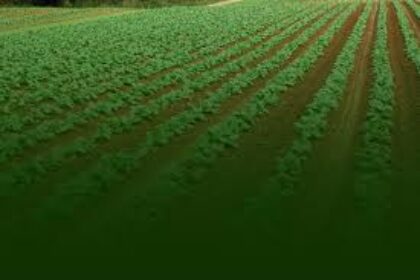
Source: https://www.mordorintelligence.com/industry-reports/agriculture-in-mena-region
The agriculture market in the MENA region is projected to grow at a CAGR of 7.7% during the forecast period (2020-2025). MENA is an acronym that refers to the countries in the Middle East and North Africa.
· In most of the countries in the Middle East and North Africa, the contribution of the agricultural sector to the overall economy varies significantly among countries in the region, ranging from about 2.6 % in Saudi Arabia to 11.7 % in Egypt (Central Intelligence Agency, 2017).
· Water-efficient irrigation is expanding, thereby, enabling intensive production of high-value cash and export crops, chiefly including fruits and vegetables. A dominant concern in the MENA region is its high and growing dependence on the international markets for key staple food products, as arable land and water grow scarcer. The governments of various countries have taken steps to conserve water by banning the production of water-thirsty crops, such as wheat and green fodder.
· Food demand is increasing in the MENA region, mainly for two key reasons, which are the population growth and rising incomes. Thus, the proper use of agricultural resources, new technology, and favorable policies are crucial in driving the agriculture sector of the region, in the coming years.
Scope of the report
The study identifies the current situation of the agricultural sector of MENA countries and predicts the growth of the various segments in the sector. In the report, the sectors taken into consideration are food crops, cereals, fruits, and vegetables. The study discusses agricultural production, consumption, import, export, market trends, government regulations, and growth forecast, as well.
| Food Crops/Cereals | |
| Production Analysis | |
| Consumption Analysis and Market Value | |
| Import Analysis by Volume and Value | |
| Export Analysis by Volume and Value | |
| Price Trend Analysis |
| Fruits | |
| Production Analysis | |
| Consumption Analysis and Market Value | |
| Import Analysis by Volume and Value | |
| Export Analysis by Volume and Value | |
| Price Trend Analysis |
| Vegetables | |
| Production Analysis | |
| Consumption Analysis and Market Value | |
| Import Analysis by Volume and Value | |
| Export Analysis by Volume and Value | |
| Price Trend Analysis |
| Oilseeds/Non-food Crops | |
| Production Analysis | |
| Consumption Analysis and Market Value | |
| Import Analysis by Volume and Value | |
| Export Analysis by Volume and Value | |
| Price Trend Analysis |
Report scope can be customized per your requirements. Click here.
Key Market Trends
The Quest for Food Self Sufficiency is Driving Production
Among the food security challenges in the region, undernourishment, poverty, low agricultural productivity under scarce natural resources, and food import dependency pose as the main problems. To tackle the increasing dependency on imports, countries in the region are taking several measures to ramp up production, as there are opportunities to partially address food insecurity by increasing food production. For instance, a political blockade in Qatar turned into a boon for its food security as the Ministry of Economy and Commerce (MEC), in cooperation with shopping malls and large retail outlets, unveiled the “National Product” of “Made in Qatar” initiative. Under this initiative, farmers are growing fruits and vegetables in greenhouses and are being sold as goods bearing the slogan “National Product” prominently to facilitate consumers’ access to these products. In another instance, according to a recent FAO report titled “The State of Food Insecurity in the World”, Morocco has made significant progress in the reduction of hunger. This was made possible by maximizing production from large-scale farms and supporting small-scale farms in reducing poverty and hunger, through venture capitalism. The production of course grain grew from 777,120 metric ton in 2016 to 3,005,008 metric ton in 2018 (FAO). Thus, the quest for achieving food self-sufficiency is majorly driving agricultural production in the MENA region.

To understand key trends, Download Sample Report
Egypt Leads in Fruits and Vegetable Production
Egypt is the highest producer of fruits and vegetables in the region, closely followed by Iran. Fruits and vegetables are the most suitable crops for the climatic conditions of countries in the MENA region. The countries in the region direct their scarce water resources to more value-added crops, like fruit and vegetables grown in greenhouses, as opposed to growing water-intensive cereal crops. According to FAO, Egypt produced 15,153,251 metric ton of primary fruits and 15,572,765 metric ton of primary vegetables in 2018. Egypt is also a significant exporter of fruit and vegetables to the European Union. Major fruits and vegetables produced in the region are grapes, dates, watermelon, bananas, sugarcane, eggplants, and potatoes. Hence, the production of fruits and vegetables is likely to drive the whole agricultural sector in the country, during the forecast period.

To understand geography trends, Download Sample Report.
Market Overview
· The agriculture market in the MENA region is projected to grow at a CAGR of 7.7% during the forecast period (2020-2025). MENA is an acronym that refers to the countries in the Middle East and North Africa.
· In most of the countries in the Middle East and North Africa, the contribution of the agricultural sector to the overall economy varies significantly among countries in the region, ranging from about 2.6 % in Saudi Arabia to 11.7 % in Egypt (Central Intelligence Agency, 2017).
· Water-efficient irrigation is expanding, thereby, enabling intensive production of high-value cash and export crops, chiefly including fruits and vegetables. A dominant concern in the MENA region is its high and growing dependence on the international markets for key staple food products, as arable land and water grow scarcer. The governments of various countries have taken steps to conserve water by banning the production of water-thirsty crops, such as wheat and green fodder.
· Food demand is increasing in the MENA region, mainly for two key reasons, which are the population growth and rising incomes. Thus, the proper use of agricultural resources, new technology, and favorable policies are crucial in driving the agriculture sector of the region, in the coming years.
Scope of the report
The study identifies the current situation of the agricultural sector of MENA countries and predicts the growth of the various segments in the sector. In the report, the sectors taken into consideration are food crops, cereals, fruits, and vegetables. The study discusses agricultural production, consumption, import, export, market trends, government regulations, and growth forecast, as well.
| Food Crops/Cereals | |
| Production Analysis | |
| Consumption Analysis and Market Value | |
| Import Analysis by Volume and Value | |
| Export Analysis by Volume and Value | |
| Price Trend Analysis |
| Fruits | |
| Production Analysis | |
| Consumption Analysis and Market Value | |
| Import Analysis by Volume and Value | |
| Export Analysis by Volume and Value | |
| Price Trend Analysis |
| Vegetables | |
| Production Analysis | |
| Consumption Analysis and Market Value | |
| Import Analysis by Volume and Value | |
| Export Analysis by Volume and Value | |
| Price Trend Analysis |
| Oilseeds/Non-food Crops | |
| Production Analysis | |
| Consumption Analysis and Market Value | |
| Import Analysis by Volume and Value | |
| Export Analysis by Volume and Value | |
| Price Trend Analysis |
Report scope can be customized per your requirements. Click here.
Key Market Trends
The Quest for Food Self Sufficiency is Driving Production
Among the food security challenges in the region, undernourishment, poverty, low agricultural productivity under scarce natural resources, and food import dependency pose as the main problems. To tackle the increasing dependency on imports, countries in the region are taking several measures to ramp up production, as there are opportunities to partially address food insecurity by increasing food production. For instance, a political blockade in Qatar turned into a boon for its food security as the Ministry of Economy and Commerce (MEC), in cooperation with shopping malls and large retail outlets, unveiled the “National Product” of “Made in Qatar” initiative. Under this initiative, farmers are growing fruits and vegetables in greenhouses and are being sold as goods bearing the slogan “National Product” prominently to facilitate consumers’ access to these products. In another instance, according to a recent FAO report titled “The State of Food Insecurity in the World”, Morocco has made significant progress in the reduction of hunger. This was made possible by maximizing production from large-scale farms and supporting small-scale farms in reducing poverty and hunger, through venture capitalism. The production of course grain grew from 777,120 metric ton in 2016 to 3,005,008 metric ton in 2018 (FAO). Thus, the quest for achieving food self-sufficiency is majorly driving agricultural production in the MENA region.

To understand key trends, Download Sample Report
Egypt Leads in Fruits and Vegetable Production
Egypt is the highest producer of fruits and vegetables in the region, closely followed by Iran. Fruits and vegetables are the most suitable crops for the climatic conditions of countries in the MENA region. The countries in the region direct their scarce water resources to more value-added crops, like fruit and vegetables grown in greenhouses, as opposed to growing water-intensive cereal crops. According to FAO, Egypt produced 15,153,251 metric ton of primary fruits and 15,572,765 metric ton of primary vegetables in 2018. Egypt is also a significant exporter of fruit and vegetables to the European Union. Major fruits and vegetables produced in the region are grapes, dates, watermelon, bananas, sugarcane, eggplants, and potatoes. Hence, the production of fruits and vegetables is likely to drive the whole agricultural sector in the country, during the forecast period.


